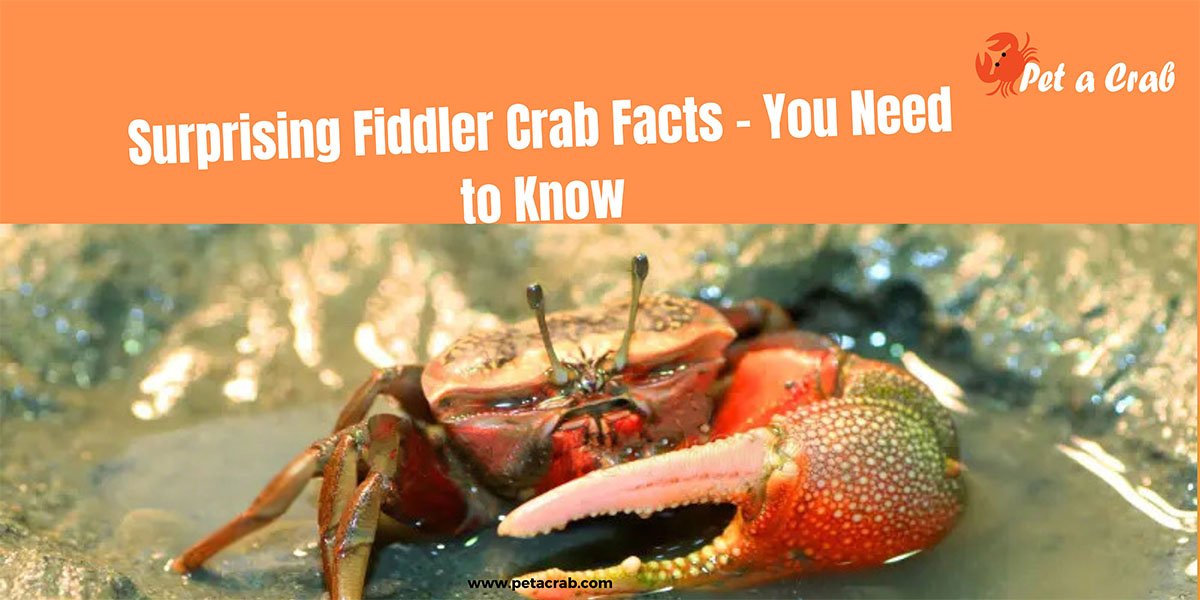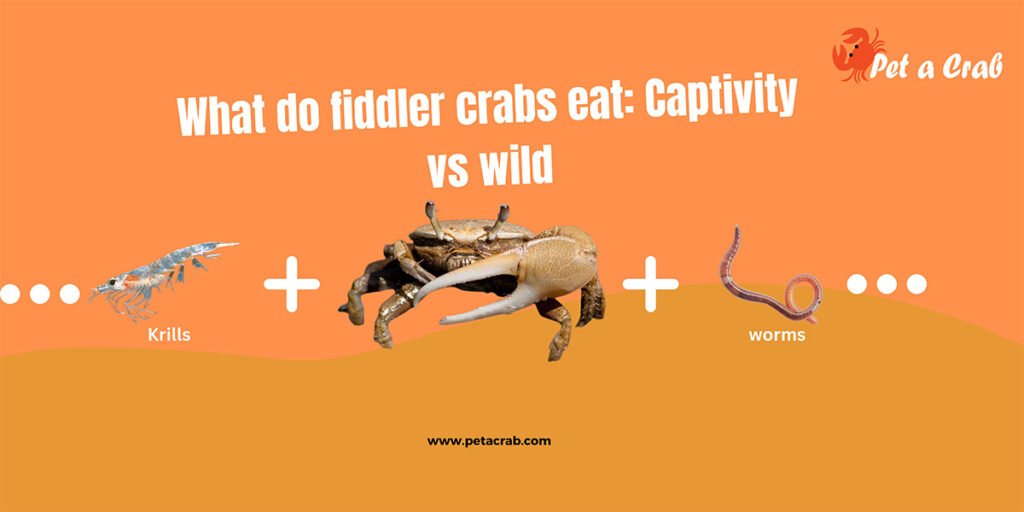Do you want to know the fiddler crab facts? It is great to have you here. Usually, the fiddler crab is one of over 100 species of crabs. They live in both the sea and land and are most often found along interradial areas of lagoons.

In this blog, we are exploring the facts about fiddler crabs, including their scientific name, specification, birth and growth, habits, diet, common health problems and reproduction. So let’s dive into the fiddler crab facts with some additional details and other key facts about these crabs.
What are fiddler crabs?
Usually, a fiddler crab is a land crab that lives in mud or sand flats near the beach. It is also called “calling crab.” However, it has a large cheliped in front of its body, which moves it back. Also fourth, as if it is playing a fiddler, so it is called a fiddler carb.
Typically, it is small in size, and the largest one is only about five centimeters or two inches. Like all other crabs, they shed their shells as they grow. During their growth cycle, if they lose the leg or claws, a new one grows when they molt. Below, I am discussing fiddler crab facts briefly.
Scientific Fact Of Fiddler Crab
- Kingdom: Animalia
- Subphylum: Crustacea
- Phylum: Arthropoda
- Class: Malacostraca
- Order: Decapoda
- Infraorder: Brachyura
- Family: Ocypodidae
- Genus: Uca

Quick Fact of Fiddler Crabs
- Common Name: Fiddler crab and calling crab
- Prey: Decaying plants, dead animals, algae, fungus and bacteria
- Length: 2″ or less
- Weight: 1.8 grams
- Number of species: 106
- Type: Crustacean
- Color: Brown, Grey, Yellow, Blue, Black and Purple
- Group behaviour: Colony
- Biggest threat: Habitat loss
- Optimum pH Level: 7.2 to 8.2
- Habitat: Salt or brackish water and sandy beaches
- Predators: Herons, Raccoons, and egrets
- Skin type: Exoskeleton
- Diet: Omnivore
- Life span: 1.5 years to 3.5 years
Incredible Fiddler Crab Facts
- The fiddler crab’s scientific name is Uca.
- Of UCa, there are 97 species.
- On earth, fiddlers are one of the busiest creatures. At all times, they are eating, mating, running around and digging.
- Whether the male calling crab has one tiny claw. Either the females have one big one to wave.
- One of the most interesting fiddler crab facts is that they have one mouth, which is situated in the middle of their body.
- They can breathe oxygen from the atmosphere.
- Another fact about the fiddler crab is that it can be identified by looking for an enlarged claw that has a smooth underside.
- In the Bay region, red jointed fiddler crab is the most common type of crab.
- If a calling crab loses its major claw, then its other claw will grow the same size.
- Though it has an enlarged claw that can be intimidating, it is not dangerous.
- Sometimes it is known as a “calling crab.” Because they like to wave as if they are calling you to them. Besides, they attract their mates by waving them over.
- Typically, they can live up to a half year in capacity.
- They can change their colour. In the daytime, they are dark colours. While they are pale at night.
- They are decapods (10 legs), like most crabs. Besides, they shed their shells as they grow, like other crabs.

Appearance of fiddler crab
Fiddler crabs vary in colour from tan to brown. Typically, three species of fiddler crabs can be found in the Bay region, including
- The red-jointed fiddler crab: The red-jointed crab shell has a groove behind each eye. It is the largest crab.
- The marsh fiddler crab: The marsh-calling crab is the smallest. Whether the male marsh crab has a royal blue spot in the carapace centre. On the other side, a female has a blue or purplish shell.
- The sand fiddler crab: Usually, the sand-calling crabs are lighter than the other two species. However, males have one enlarged claw that can grow to 1.5-2 inches long. In contrast, the females’ claws are equal in size. In addition, the shell was squared with rounded rear edges.
Overview of Fiddler Crab Facts- Dive Into The Fiddler Crab Essential Facts
- Evolution and Origins – Fiddler crabs are widespread and range from the Gulf of Mexico to South America. They are called fiddlers due to the enlarged claws of males. However, they are also known as calling crabs.
- Birth and Growth – As part of the plankton, they live in the open water. Their eggs will hatch under the microscope as free-swimming larvae. Before their final larval stage, which is an immature crab, the larvae will go through several moult stages.
- Behavior and Temperament – In the wild, fiddler crabs retreat to muddy burrows as the ocean tide goes out. Most of the time, they spend their time in the water and use their claws to communicate. In general, they are quiet and calm.
- Size – Generally, they are very small in size and reach about 2 inches across their body.
- Eggs – For two weeks, the female crab will incubate the egg sponge. Generally, a fertilized female crab can carry hundreds to thousands of eggs under her abdomen.
- Habitat – Most of the time, they are found in the Chesapeake Bay region along mud flats, beaches, lagoons, and swamps.
- Mating – During the summer season, they are mate in every two weeks. Male crabs will dig and balance a tidy burrow while searching for a female partner whom they attract with their huge claw. However, female calling crabs will choose their mate based on the size of their claw.
- Feeding – Usually, fiddler crabs eat bacteria, decaying marsh plants, fungus and algae. For food particles, they are fed by sifting through the mood or sand.
- Diet – Among the other crabs, a fiddler’s crab eats cleaner. Usually, they eat in a puddle. So that they can separate their food from the dirt and sand.
- Common Health Problems – They do not display any health problems in captivity. However, allowing wasting most of the time can cause you to get sick and even die.

Frequently Asked Questions About Fiddler Crab Facts
How long can a calling crab stay underwater?
Usually, these crabs have gills. So that it requires breathing oxygen. They can survive up to 2 days out of the water and would not survive if left in a tank without access to dry ground.
Do they swim to the surface?
Absolutely yes. As they are semi-aquatic that means they can live on both water and land.
What does Fiddler’s crab look like?
Generally, they have a square-shaped body with a smooth carapace and long, slender eye stalks.


